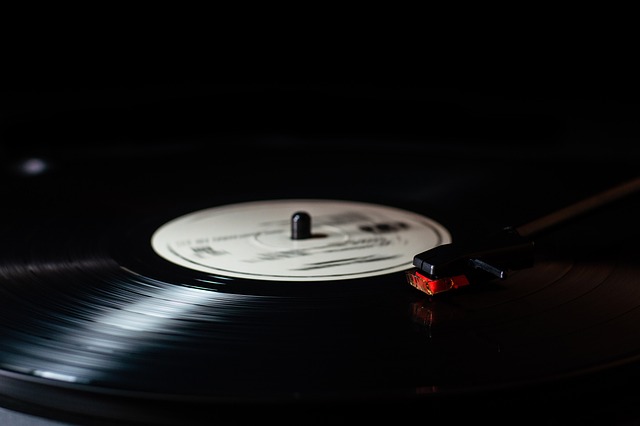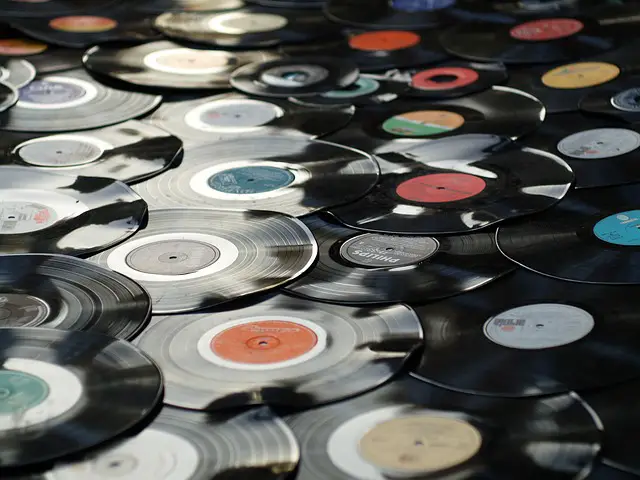The Evolution of Music From Vinyl to Streaming
These days, recorded music is omnipresent. Streaming across our phones, PCs, MP3 players, Pandora, Soundcloud, YouTube, and satellite radio, it seems to be emanating from the air we breathe. Vinyl and cassette tapes are two examples of “retro” formats that are gaining popularity.
It’s difficult to picture a time when if you wanted to hear music, you had to create it yourself or know someone who did. There were various stages – and some fascinating diversions – between then and today’s recording and delivery technologies.
My wife and I are ardent vinyl collectors. We are happy proprietors of an ancient Victrola that was handed down from my great grandma. Most of you are familiar with these ancient record players, but let’s have a look at what came before.

The Early Days
In 1877, Thomas Edison utilized two needles on tinfoil cylinders. One needle was for recording, while the other was for playback. This was the invention of the phonograph. The first words he recorded were “Mary had a little lamb”
In 1887, Edison improved on Alexander Graham Bell’s lab innovation, the Graphophone. Among other developments, wax cylinders replaced tinfoil-covered cylinders.
Recorded sound might be used for a variety of purposes, including talking toys, business dictation, language preservation, and family history. However, recording and distributing music soon dominated the sound recording sector.
The Edison Entertainment Company’s wax cylinder players, like with those of numerous rivals, lasted into the 1920s:
Berliner also developed a process for mass-producing duplicates of the original record. Until Edison improved his devices, Berliner’s Gramophone was the loudest machine on the market.
As you can see, these early forms had little recording time. That was about to change.
An Industry is Born.
In 1902, Edison produced $.50 “Gold Moulded” cylinders with a better firm wax surface. They were mass-made using a molding method that really created gold vapor. Europe “Red Seal” 10-inch CDs with a 4-minute capacity were offered for $1.00 apiece, including well-known European performers. Feodor Chaliapin, a Russian Imperial Opera vocalist, made the first Red Seal recordings, recording ten for the Gramophone Company.
In 1903, the Victor business started importing these famous labels and rose to the top of the classical music record sales charts. The 10-inch disc soon gained popularity over the old 7-inch standard disc, which could only play for two or three minutes.
The Victrola
In 1906, the Victor Talking Machine Company introduced the Victrola. This brand of “talking machines” concealed the turntable and amplifying horn behind a wooden cabinet. Rather than improving music quality, the goal was to create a home phonograph that looked less like equipment and more like furniture. These internal horn devices were an instant success. Soon, the brand name “Victrola” became associated with record players.
A variety of forms and pricing points would follow, ranging from a tiny tabletop for $15 to a high-end gilded trip meant for mansions for $600. Victrolas quickly became the most popular form of home phonograph, selling in large quantities until the late 1920s.
Electronic Recording
In the 1920s, innovators invented electrical recording, which included microphones and amplifiers, and record players were eventually electrified. This was a significant improvement above traditional mechanical approaches. Electronic technology, which was first only attainable to the most affluent devotees (an electronic record player cost as much as a new vehicle), started to permeate the market.
Tape Recording

When the Magnetophone, the first reel-to-reel tape recorder and player, debuted in the mid-1930s, other visionary innovators were already working on electronic recording. The earliest classical recordings were poor, but modifications to the tape improved.
German engineers found high-bias recording by accident in the early 1940s while repairing a “faulty” system. Tape recording quickly exceeded the current phonograph recording technology. The new devices remained a carefully guarded Nazi secret throughout World War II. When the machines were found after the war, engineers swiftly replicated and improved upon them, and magnetic tape recording became the industry standard.
Wire Recording
On the opposite side of the Atlantic, Marvin Camras of the Armour Research Foundation created the wire recorder and player. It sold to the military during WWII. Wire recorders were popular among amateurs during the 1950s.
Understanding the development of music formats is very important.
Disc? Vinyl? Tape? What Is In A Format?
Enter the captivating world of music, where each note is a brushstroke on an emotional canvas. Music is more than just melody and rhythm; it is an adventure, an immersive experience woven intimately into its structure. In our most recent examination, we start on a fascinating journey across the ever-changing universe of music formats. These formats are more than simply sound carriers; they are time capsules, preserving the lyrical echoes of bygone periods and altering how we perceive and enjoy the tunes that soundtrack our lives. Join us as we explore the enormous influence of these sonic storytellers on not just the songs we hear, but also how we experience the wonder of music itself.
From Walkman to iPod and Back Again.
From Sony’s Walkman to Apple’s iPod, we’ve seen huge shifts in how we consume music. These gadgets made music a portable kind of entertainment, dramatically influencing how music is created and transmitted. The transition from physical design to ease of use has transformed our relationship with music, opening the path for new creative expressions and unique musical genres. However, vinyl records dominated the debate in the 1970s and continue to do so now. Despite the digital revolution, vinyl has made a surprising resurgence, reigniting a passion for the tactile and personal experience of tangible music. Explore the numerous vinyl formats, such as 10-inch, seven-inch, and flexi discs, each having its own distinct qualities and appeal.
Plastic or paper?
Physical artifacts such as handwritten notes or album cover enhance the emotional depth of the listening experience. They convey the artist’s intention and generate a distinct interaction with the format. We also discuss the period of USB albums and the skill of carving grooves into CDs, with each medium having distinct selling points and obstacles. We must consider their future as we traverse the ever-changing environment of music formats. Surprisingly, cassettes have made a comeback, particularly in heavy metal subgenres, providing an affordable option for performers. Furthermore, technological breakthroughs like Bluetooth streaming and wireless communication are changing the way people listen to music. The place and how of everything appears to change on a daily basis.
Exploration of music formats extends beyond the medium to understanding how these forms impact our interactions with music and the business. As the environment evolves, one thing stays constant: our love of music and the many ways we choose to enjoy it. Finally, you should stay with the format that you like the best.
Whether you’re a die-hard vinyl collector, a digital music fan, or somewhere in between, there has been an exciting journey through the world of music formats. So there’s not much else to do except tune in, relax, and discover the audio progression together.
Exploring the shift from vinyl albums to digital streaming platforms.
In the grand scheme of things, digital music has altered the way we create, consume, and listen to music. Consider it a story: digital music has changed the way we perceive music. This article investigates what digital music is, where it originates from, how it impacts us, and how it is always evolving. We’ll discuss digital tunes, streaming music, and the exciting world of electronic music.
Evolution of Digital Music
Origins of Digital Music
The move from vinyl records and cassette tapes to digital media is a watershed moment in the history of the music business. The introduction of CDs and MP3s signaled a new age, allowing customers to save and exchange music digitally. The internet played a critical role in the spread of digital music, resulting in the growth of online platforms and the democratization of music distribution.

Rise of Electronic Music
Electronic music, with its throbbing rhythms and generated sounds, has emerged as a revolutionary force in the digital music industry. Electronic music genres, ranging from techno and house to dubstep and EDM, not only grew in popularity but also influenced digital music trends. Pioneering musicians like as Kraftwerk, Daft Punk, and Aphex Twin paved the way for the digital era’s sonic palette.
Digital Songs and Their Impact
Accessibility and Convenience
Digital songs transformed the music industry, providing an unprecedented degree of accessibility and ease. With the introduction of digital music, obtaining and keeping beloved songs became very simple. This radical change in consumer behavior enabled music fans to carry whole libraries in their pockets, placing a vast inventory of tunes at their fingertips.
The ease of downloading music online not only changed how individuals consumed their favorite songs, but it also played a critical part in transforming the business. Traditional tangible formats, including as CDs and vinyl albums, began to dwindle as listeners preferred the convenience of digital experiences.
Changing Dynamics of Music Distribution
The digital age saw a seismic upheaval in music distribution, as old approaches gave way to new channels. This movement upended traditional hierarchies, affecting record companies, artists, and independent musicians equally. Digital distribution enabled musicians to access worldwide audiences without the conventional gatekeepers, resulting in a more diversified and democratized music environment.






